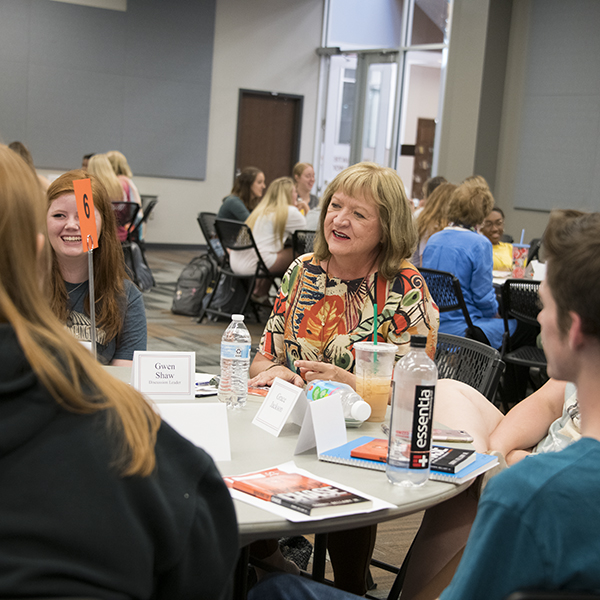
Reading to Retention
Wednesday, October 23, 2019
This fall marked the 15th anniversary of the College of Human Sciences’ Freshman Reading Program, which has been key to the college’s strong student retention rate.
When Dr. Shiretta Ownbey began serving as associate dean for academic programs and services in Human Sciences in 2003, the college wanted to improve its six-year graduation and retention rates. In 2004, the college established OSU’s first Student Success Center as a central unit for academic advising, career development and more.
Ownbey also set out to learn about research on the first-year experience for college students, attending a series of conferences and institutes.
“It was not uncommon to hear about a reading program, but most were done across small, private universities,” Ownbey said. “It was typically a volunteer effort, and students could do it or not.
“The research shows that if a student connects very early in their first semester with a trusted adult who is welcoming and willing to help the student, there is a greater chance the student will be retained,” Ownbey said.
She liked the idea of a reading program and felt it was important for participation to be a requirement and to make it easy for students to participate.
Under Ownbey’s leadership, the Freshman Reading Program launched in 2005 to enhance the first-year experience for freshmen in the College of Human Sciences. It has since expanded to include transfer students and is one of a series of initiatives that have benefited the college’s student retention rate.
Ownbey and the academic and program services team have recruited 40-50 volunteers, including faculty and staff from across campus and even community members, who want to help students succeed in their first year of college. These adults serve as discussion group leaders, and many them have participated in the program from the beginning.
“We pick a book, and the college purchases copies that are given as a gift to incoming students when they come to campus for orientation in the summer,” Ownbey said.
The selected book is always small, easy to read and features a message that will be relevant to students’ success in their first year of college and beyond. Before classes begin, students are provided questions to consider as they read the book.
The book discussion is coordinated through first-year seminar courses, which are taught by academic advisors with students grouped according to their majors. Roughly six to eight students are assigned to each facilitator, and the groups meet twice in September to discuss the book.
“What I notice is the connection students make with their discussion leaders,” said Kristi Seuhs, director of Student Advising and Retention. “The connection and mentorship continue throughout the semester with the adults taking students to lunch or checking in on them. There is a strong message sent to students — ‘Welcome to college and to Stillwater. We’re here to support you.’"
Discussion leaders have noticed when a student may be struggling or need extra support, she said.
“The opportunity for us (as advisers) to be aware and to reach out with resources or support often helps a student persist,” she said.
Macey Mayberry, a junior studying human development and family science, has experienced the reading as both a new freshman and later as a student mentor.
“I moved 6 hours away from home and knew no on one when I came to OSU, so book club during the second week of school allowed me to have some familiar faces in my classes which was very helpful,” Mayberry said.
Mayberry also noted that the books serve as good conversation starters about struggles freshmen may go through.
“It’s easy to feel like you’re alone at the beginning of your first year. You may feel like you’re not meeting friends or not finding things you want to get involved in. It helps knowing that other people are going through these same struggles too,” she said.
The Freshman Reading Program is one of series of initiatives that have helped the College of Human Sciences retain students. In the mid-1990s, the college retention rate was around 72 percent. By 2010, that number had risen to 86 percent and for 2018-19, it was better than 87 percent, one of the strongest rates on campus.
“Our college has done a really good job of connecting with lower-division students, working with them to keep them in school. It has been a strategic effort over a period of time,” Ownbey said.
